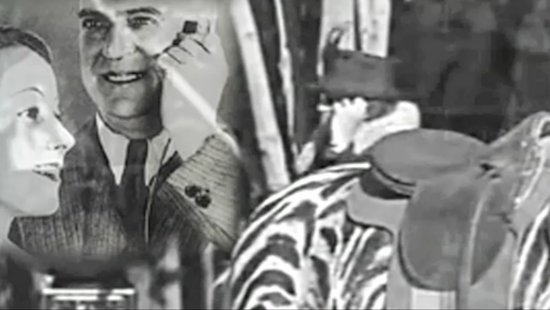“Charlie Chaplin Time Traveler” Most Likely Just Using a Hearing Aid
I kind of can’t believe that the so-called “Charlie Chaplin Time Traveler” story, wherein a filmmaker named George Clarke claimed that he’d spotted a “time traveler” in the form of a woman who appeared to be talking on a cell phone at the premiere of a Charlie Chaplin film in 1928 (above, right) actually became a thing. Not just an Internet thing, but a real world thing, breathlessly covered by major newspapers and television news reporters, who carefully expressed skepticism over the woman at the Chaplin premiere having a cell phone because there weren’t any cell towers at the time. How about: She obviously wasn’t a time traveler, so why are you still talking about this? Everyone knows that the Doctor will never be a female, besides.
But the video did raise a question: If the woman in the video wasn’t holding a cell phone, what was she holding? We may never definitively know until we develop time travel ourselves, go back to the Chaplin premiere and hang out with zebras, but one pretty plausible explanation has surfaced courtesy of YouTube user WilzStuff: It’s just a hearing aid. A big, clunky, old-fashioned, carbon-amplified hearing aid.
In 1924, Siemens patented “a compact, pocket sized carbon microphone/amplifier device suitable for pocket instruments,” (seen in action above-left) which their website describes as follows:
A fundamental patent
For a while, the carbon amplifier patented by Siemens played a major role in hearing aid technology and significantly raised the volume of hearing aids.
The electrical energy controlled by the carbon microphone was not fed to the receiver directly. It first drove the diaphragm of an electromagnetic system connected to a carbon-granule chamber. Current was transmitted across this chamber from the vibrating diaphragm electrode to the fixed electrode plate.
The amplified current produced mechanical vibrations in the electromagnetic hearing diaphragm that were then transmitted to the ear as sound.
Certainly seems more plausible than a time-traveling cell phone. If there’s one mildly “serious” lesson to be gathered from all of this silliness, it’s that technology changes so rapidly that gadgets can become unrecognizable after just a few generations. In our era of tiny, invisible-in-canal hearing aids, no one would put up with a cell phone-sized hearing aid, but at the time, they must have seemed miraculous to the hearing-impaired.
The original “Charlie Chaplin time traveler” video, for comparison’s sake:
(h/t WilzStuff)
Have a tip we should know? tips@themarysue.com
